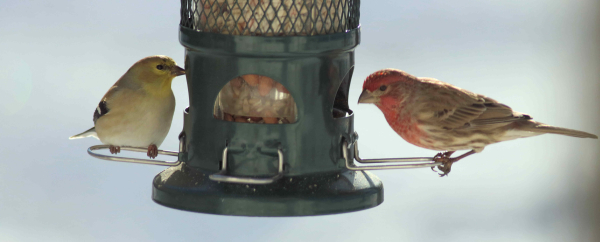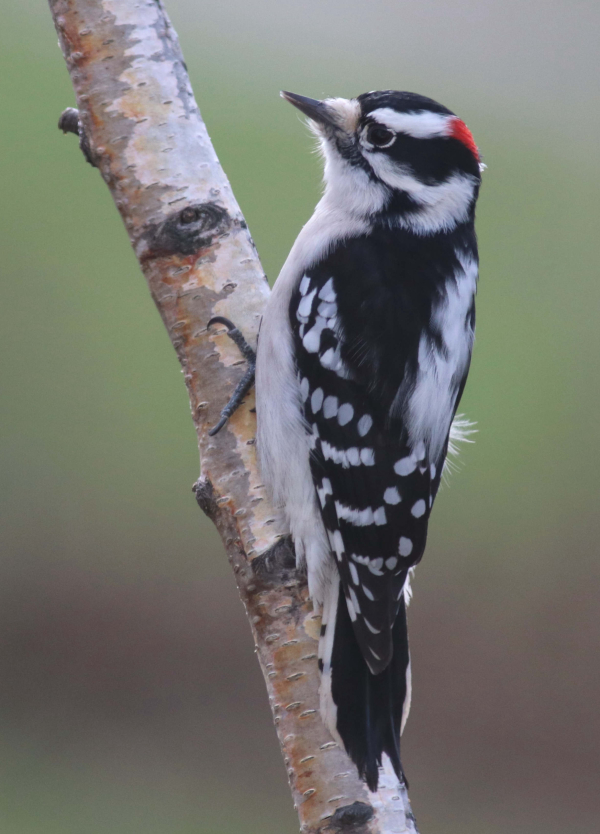
American Goldfinches, House Finches, and Downy Woodpeckers were among the birds studied at six central Illinois forested sites.

|
Among the most popular reasons to feed wild birds is to assist birds by supplementing their food (and to attract them to our yards). To provide useful information about the effects of feeding birds, a team of researchers recently examined how feeding wild birds influenced the health of birds at forested study sites in central Illinois. Generally, the individual health of birds improved with supplemental feeding, including increased antioxidant levels, reduced stress, and more rapid feather growth. In some species, researchers also found improved body condition and innate immune defenses.
More specifically, the researchers compared 1,680 birds from 3 forested sites where they provided supplemental food to birds, with 3 forested sites where no supplemental food was provided.
They also monitored changes in the individual health of birds and determined whether wild bird health changed 10 months after feeders were removed from the 3 supplemental feeding sites. As an added test, the researchers found there was no difference among all 6 study sites 10 months after feeders were removed, suggesting that the impact on birds’ health was indeed related to supplemental feeding.
Of the 1,680 birds studied from the 6 study sites, the most common species in order of abundance included American Goldfinches, Black-capped Chickadees, Brown-headed Cowbirds, Chipping Sparrows, Downy Woodpeckers, Gray Catbirds, House Finches, Indigo Buntings, Northern Cardinals, Tufted Titmice, and White-breasted Nuthatches. Bird feeding significantly influenced the health of these species in central Illinois, where birds with access to feeders consistently experienced better overall health than the same species that did not have access to supplemental feeding.
Potential negative effects of supplemental feeding were also found, including an increase in infectious disease among individual birds at forested sites where supplemental food was offered. Birds with clear signs of pathology showed reduced physiological metrics, but birds at feeder sites typically showed improved health conditions. At the peak of prevalence of infectious disease, 8 percent of all birds at feeder study sites exhibited symptoms of conjunctivitis, pox, dermal disease, or cloacal disease.
The researchers found both positive and negative impacts of wild bird feeding and, in general, found that birds that had access to supplemental food were in better physiological condition. Moreover, the negative health effects they found in birds may be mitigated by birders engaging in safer bird feeding practices.
To review the entire research article, which was published in the journal Conservation Physiology, see http://www.ectownusa.net/wbfi/docs/Bird-Feeding_Impact_Manuscript_2015.pdf
Share your backyard birding experiences and photos at editorstbw2@gmail.com